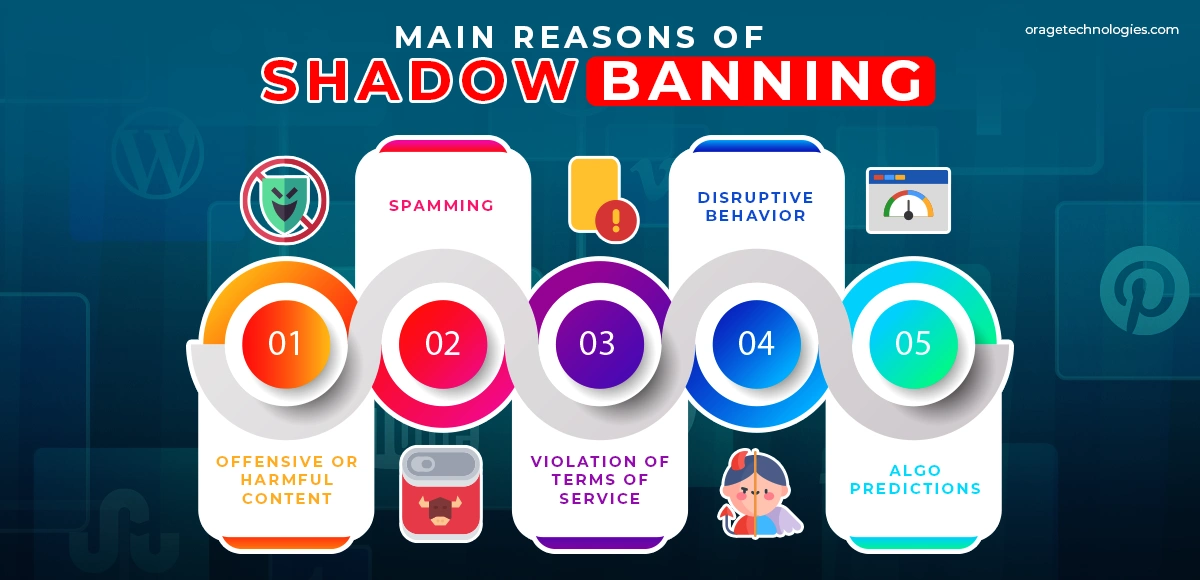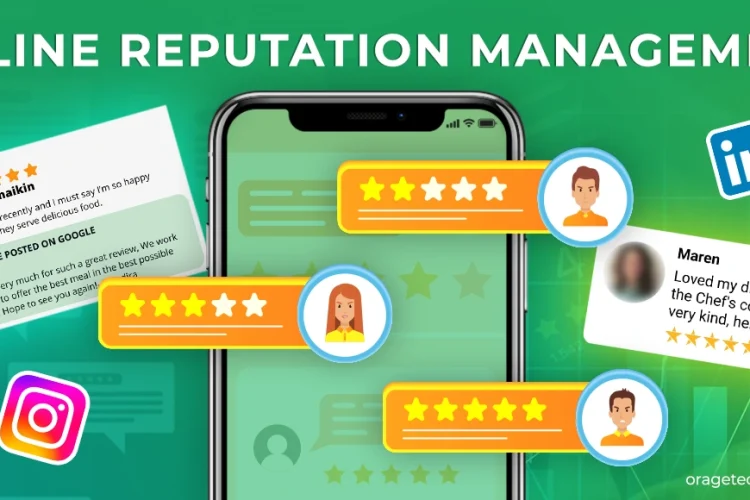
Divya Stuti, with over 5 years of experience in Digital Marketing & Content Writing, has a knack for turning complex Marketing strategies, trends, and jargon...
Have you ever felt that no matter how much you try, how much you put efforts, try new strategies, your social media account fails to accumulate the reach and visibility that it deserve? Do you feel your content is shadowed? This is no perception, it is a real phenomenon called shadow banning.
Shadow banning has been a topic of debate and controversy. This practice can affect creators, brands, influencers, and any of the social media users. So, let’s dive right into what it really means, how it works, why platforms use it, and how you can avoid it.
What is Shadow Banning?
Shadow banning is a content moderation technique used by social media platforms to reduce the visibility of a user’s content without informing them.
The content isn’t deleted. The user can still post, comment, and interact. But their content becomes less visible or even invisible to others. It’s like talking into a mic that no one can hear.
It is similar to other content moderation phenomenon such as:
- Stealth banning
- Ghost banning
- Comment ghosting
It is commonly used to control content that is harmful, offensive, overly promotional, or spammy.
A case study on shadow bans has reported different types of shadow-banning practices. These are:
- The brand hashtags and the user profile don’t show in search suggestions
- Your account witnessed a sudden fall in engagement, views, and followers.
- Some features such as, or replies don’t appear for you
- Temporary account ban of your page that resumes to be normal after some time.
While in the case of shadow banning, the users are not notified that they are banned. And all they can do is guess the reason behind the abnormal drop on their page.
How Does Shadow Banning Work?
Although the platforms do not acknowledge the existence of a shadow ban, it does exist. Platforms use two main methods to shadow-ban users:
1. Visibility Reduction
Your post may still appear on your profile but won’t show up in:
- Hashtag results
- Explore or discover pages
- Follower feeds
Even people who follow you might not see your content.
2. Algorithm De-prioritization
The algorithm pushes your post to the bottom of the queue or doesn’t show it at all. This means:
- Lower reach
- Less engagement
- Limited visibility across the platform
This kind of silent filtering makes shadow banning hard to detect.
Main Reasons for Shadow Banning
Platforms don’t shadow-ban people randomly. Here are the main reasons behind it:
- Offensive or Harmful Content: Hate speech, bullying, adult content, and misinformation often get flagged.
- Spamming: Excessive posting, repetitive comments, and overuse of hashtags can trigger shadow bans.
- Violation of Terms of Service: Ignoring platform rules can lead to reduced visibility.
- Disruptive Behavior: Aggressive arguing, trolling, or reporting abuse can cause a ban.
- Algorithmic Predictions: Sometimes, even when no rules are broken, AI predicts harmful behavior based on past patterns—and hides the content.
- Bot Mitigation: To catch accounts that act like bots but haven’t fully broken rules
Controversies Around Shadow Banning
Shadow banning has sparked heated debates online. And people have many doubts and conceptions about this phenomenon. The major portion of this doubt and debate can be attributed to being unrecognized by social media platforms. Here’s why people are concerned:

- Transparency Issues: Most platforms don’t inform users when they’re shadow-banned. This lack of clarity leads to confusion and mistrust.
- Bias and Fairness: Some users believe certain groups are unfairly targeted. This has raised concerns about algorithmic bias.
- Censorship vs. Free Speech: While moderation is necessary, some feel shadow banning silences voices that challenge mainstream ideas.
- Algorithm Accountability: AI makes decisions behind the scenes. But who is checking the AI? Users demand more control and oversight.
- Content Creation Pressure: Creators rely on engagement. A shadow ban can kill motivation and income, without warning.
How to Detect Shadow Banning
Since platforms don’t send a message saying, “You’re shadow banned,” you have to look for signs:
Sudden Engagement Nosedive: Your likes, comments, or views drop sharply overnight, without any reason.
Hashtag Invisibility: Your post no longer appears under the hashtags you’ve used—even to non-followers.
Follower Confusion: Your audience says they didn’t see your content or thought you weren’t posting.
Comment Ghosting: You leave comments on others’ posts, but no one replies or reacts.
Analytics Anomalies: Your insights or backend data show irregular drops despite steady content quality.
If multiple signs appear together, it’s a strong indicator of a shadow ban.
Platforms that use Shadow banning
Platforms don’t accept that they are using shadow banning. However, they say that they are suppressing content that breaks their guidelines or behaves like spam.
Let’s dive deeper into shadow bans on some of the most popular social media platforms:
If anything is sexually suggestive, illegal, or against the community guidelines of Instagram, they delete that content or hide the content. They prefer family-friendly content.
Now, on Instagram, you can’t exactly tell when you get Shadowbanned or when you don’t, but there are certain things that change that, which you can get to know whether you are Shadow-banned or not.
- First, if you weren’t able to find yourself on Instagram search results.
- Second, if your account engagement is dramatically declining.
If you’re posting anything that is controversial or illegal, or you are copy-pasting the same link consistently, your account engagement will start dropping or getting less visibility; this is because of shadow banning.
In 2015, Reddit openly shadow-banned those who broke its guidelines. Later on, they replaced this with account suspension, which notifies users of why they suspended their accounts and for how long.
Youtube
YouTube doesn’t directly shadow the ban, but it reviews before showing them in search results..
To avoid Shadow banning on your account, you can avoid controversial words, spamming, and posting harmful content.
Twitter also does not directly accept whether they do Shadowban or not; they call it visibility filtering. They rank low the content or hide it from the search results, the content that behaves spammy or seems to be harmful.
Tik Tok
On Tiktok, if your content does not appear on the ‘For You page,’ the platform considers it to be a shadow ban. Users deem the ‘For You Page’ to be a crucial feature for gaining engagement on the platform.
If the TikTok algorithm finds that your content is breaking their community guideline, they’ll start hiding your post without notifying you, which leads to a drastic drop in your engagement.
How to Prevent Shadow Banning
“Prevention is better than cure”. And though there is no exact information on how to avoid shadow banning, you can use the following practices while using any social media platform:

- Follow the community guidelines of the platform.
- Avoid spamming; don’t use automated bots.
- Do not use hashtags that are irrelevant or banned.
- Don’t use others’ content without proper permission.
- Avoid posting content that is illegal, harmful, or contains controversial keywords.
- Do not follow or unfollow a huge number of accounts at once.
- Do not use misleading headlines or information for engagement.
- Engage with your audience
- Analyze your content performance on a regular basis.
However, do not worry too much about shadow bans. They are not permanent. Diverse your presence on social media, follow the community guidelines and change according to the change platform algorithm, post high-quality content, and keep your audience engaged.
Conclusion
Shadow banning is an effective strategy to limit content that violates community guidelines and posts that are illegal or seem to be spammy. While platforms do not admit this as a shadow ban, they acknowledge it as content moderation. It is a two-faced phenomenon, that on the one hand seems to be harmful for creators limiting their reach. While on the other hand, it keeps people safe from harmful content. Thus creating a balance.
Also Read:
200+ New Self Captions for Instagram
Step-to-Step Guide to Croxyproxy Instagram ID Login

Divya Stuti, with over 5 years of experience in Digital Marketing & Content Writing, has a knack for turning complex Marketing strategies, trends, and jargon into interesting and easy to digest blog posts. Whether she’s breaking down the SEO, Social Media or decoding campaigns, Divya knows how to make marketing feel exciting and easy to understand. Armed with a sharp eye for strategy and a storyteller’s instinct, she writes with clarity, creativity, and just the right dose of wit.
More Posts

